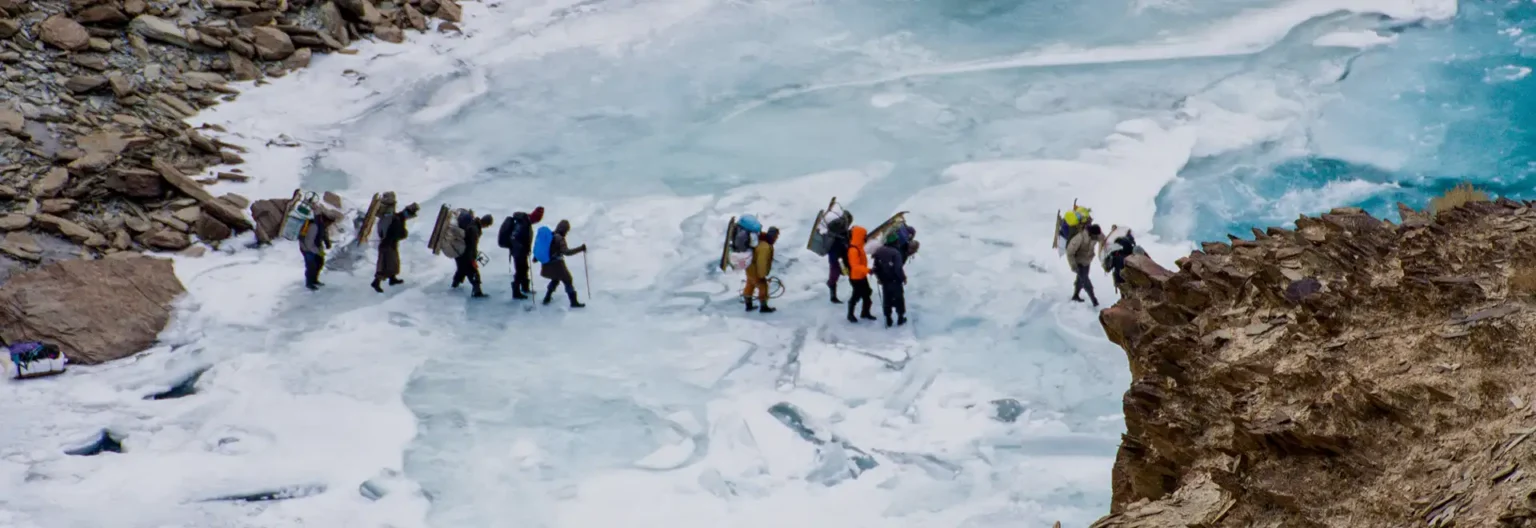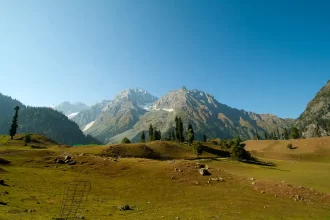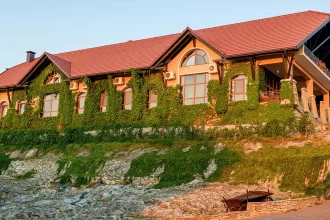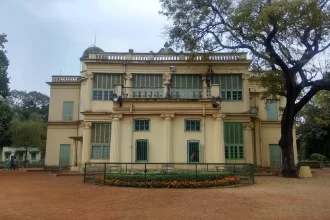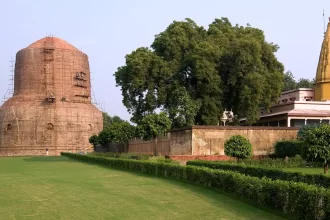The Chadar Trek is one among the very few of India’s longest treks that can test any adventure sportster to their limits, offering an awe-inspiring and thrilling adventure of breathtaking views in Ladakh. It is here that the trekkers cross over a thick ice sheet formed from the freezing up of the Zanskar River during the winter months. A most aptly titled trek Frozen River Trek. A journey into the core of the Himalayas, where extreme cold, isolation and natural beauty are able to go together for this great adventure. One comes close to seeing that untouched, icy region with hardish weather and an isolated culture.
Why Chadar Trek so different from other treks?
The term Chadar literally means “blanket” in Hindi, the thick slab of ice laid over the Zanskar River during winter. This created an eerie landscape of glacial plains and frozen waterfalls. It was not a trek through mountains as usual but a more physically demanding hike since the ice surface was slippery as well as uneven, and it was ice-cold outside. The trek remains at low temperatures where sometimes the temperature goes up to as low as 20°C to -30°C, and this can be a tough climate to contend with.
River of Ice
Rhine river is basically interspersed with narrow ice caves and jagged cliffs. It is a combination of beauty and danger in the journey. With regard to Zanskar Valley, winter cuts off its access from the rest of the world, and hence contributes to making a trek even more immersive. This experience will also allow trekkers to get in touch with the Zanskari people, whose living style has remained intact, unchanged since centuries, with such remoteness and harsh environment.
Best Time to Visit the Chadar Trek
Read more: Place to visit in Himachal
The best time to venture out for the mid-January to mid-February winter prime season would make it ideal to do the Chadar Trek.Then, it would be safe enough to make the journey as the ice of the river becomes thick and the landscape most pristine ever.
Mid-January to Mid-February: is prime time and perfect for facing all the challenges that come with the Chadar Trek. Temperatures are freezing. It’s quite worth the winter experience but quite challenging because it’s extreme cold weather and proper preparation is necessary.
Early March: Now, the ice starts melting that creates much turmoil and uncertainty over the terrain. It is still a very thrilling time for trekking but much better suited to not so extreme experience.
Read more: Tourist destination in Jammu and Kashmir
How to Reach the Chadar Trek
The trek for Chadar Trek begins from Leh, capital of Ladakh, Leh, that is the nearest big town.
1.By Air: Leh has regular flights to all other cities such as Delhi, Srinagar and Mumbai. As this trek takes place at such a high altitude, it is always advisable to book in advance since all seats get completely filled up well in advance in the peak season of trekking.
2.By Road: Leh can be reached by road only. Distance to the starting point of the trek is roughly about 100 km that takes roughly about 6-7 hours, in case the roads permit. Composing completely snowed up in winter months, you will have to travel with an experienced guide known to that route.
3.ByTrain: Nearest railway station is Jammu Tawi, which is 700 km away. Taxi and bus from there to Leh.
Chadar Trek Itinerary
The Chadar Trek usually lasts 7 to 8 days. Here’s one sample itinerary for a plan:
1. Day 1: Arrival in Leh
Leh, Acclimatize to a high-altitude environment of about 11,500 feet. Day to relax, hydrate and do nothing.
2.Day 2: Acclimatization Day
Spend the whole day resting in Leh. Let your body adjust to the altitude. Hydrate by drinking loads of water and relax well for the trek on.
3.Day 3: Medical Check-up
Medical check-up has to be done in ALTOA Medical Camp in Leh before going out to go for the trek.
4. Day 4: Trek to Raar More
Start trekking from Leh for the first 1.5 km up towards Raar. The short trek will give the first feel of walking on the frozen river and an overnight camping lunch break.
5.Day 5: Trek to Dib Cave/Tibb
Take off again from the same trail and move upwards toward Dib Cave, or Tibb, with beautiful views of this frozen landscape. Overnight stay at this place.
6.Day 6: Nerak Waterfall Trek
Beautiful attractor for one of the high peak points of the trek- Nerak Frozen Waterfall to use time spent, making a round about while paying visit to villagers before overnight camping.
7.Day 7: Return from Tibb
Time to head back now to Tibb. All problems are new here with ice conditions, but beautiful views inspire enough.
8.Day 8: Hike to Leh
Leave on a very triumphant note as you head back to Leh for rest and nostalgia over the fantastic journey that you undertook.
Tips on Basic Equipment and Packing
Conditions which are inevitable while undertaking Chadar Trek arise from survival recipe: proper gears. Survivalist must thus be equipped with essentials as follows:
Thermal Clothing: Layer up with help of thermal undergarments, fleece jackets, and a down jacket to keep warm.
Trekking Boots: Should be insulated and waterproof; good grip; ice walking.
Sleeping Bag: 4-season sleeping bag; the least possible that could be taken up to even minus 20° to minus 30°C; freezes during freezing nights.
Trekking Poles: mainly to ensure staying upright on slippery, uneven ice.
Headlamp: spares of extra batteries must be carried, since daylight is minimal during the winter.
Waterproof Backpack:In order to keep a wet gear dry and protected from falling snow.
Physical Fitness and Preparation
The Chadar Trek is tough so trekkers need to be very fit for the trek. The following sub-chapter briefly guides preparation:
Endurance Training: Incorporate endurance training by exercising the cardiovascular system through running, cycling, or swimming for endurance on long treks.
Strength Training: The leg and back strength as well as upper body strength is needed when one has to carry heavy backpacks over ice.
Acclimatization: Spend some time in Leh before the actual beginning of trek for 1-2 days and this will minimize the height of exposure towards altitude sickness.
It involves a lot of most extreme conditions that require hard core mental toughness. Prepare yourself for all sorts of physical and psychological torture.
Chadar Trek is very literally an adventure experience which can be termed as a marriage of physical stamina, mental strength, and nature at its best.
The challenge is as much an opportunity as crossing one of the frozen rivers in one of the most frigid places on earth. This trek in no way is easy but offers a lifetime experience and challenges one’s limitations while seeing the untouched beauty of Ladakh. It caters to both the avid trekker and the adventurous soul, leaving one with untold memories and an unforgettable experience.

